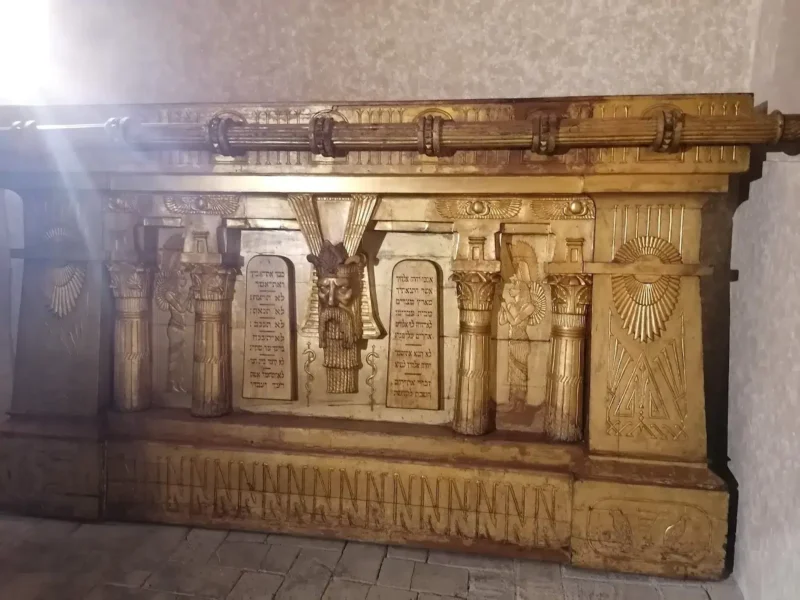The discovery of a representation of the Ark of the Covenant in the church of Sants Màrtirs Just i Pastor in Barcelona has aroused great interest. This discovery, initially shrouded in mystery, has led historians, researchers and even modern adventurers to speculate about its origin. However, the mystery was solved and reveals a fascinating story that connects Barcelona to significant historical and cultural events of the 19th century.
An unexpected finding
The news about the representation of the ark in this chapel, a forgotten area of the church, generated a myriad of theories. Readers and academics hypothesized, some quite creatively, about how it had gotten there. Some of the suggested explanations included a possible donation from the 1888 Universal Exposition, a connection to the old Liceu theater, or ritualistic elements of Holy Week. However, the truth turned out to be both simpler and extremely interesting.
The role of Manel Alonso
The discovery would not have been possible without the hard work of Manel Alonso, the custodian of the church’s historical heritage. With dedication, Alonso immersed himself in the archives and historical records to unravel the mystery. After meticulous trawling, he found a document from 1920 that shed light on the matter: the piece was designed by architect Josep Vilaseca i Casanovas, otherwise known for his famous work, the Arc de Triomf. Vilaseca, in 1876, was commissioned to create this piece for the altar, part of a tradition of the time to majestically adorn altars during religious festivities.
Influences of the time and a hidden legacy
In the 19th century, Barcelona’s churches sought to stand out during Maundy Thursday and Good Friday with elaborate monuments to commemorate the Last Supper and the Passion of Christ. Barcelona competed in the beauty of its altars, and places like the Cathedral, the church of Pi and Sant Just were visited by citizens impressed by their decorations. Vilaseca’s work, with its detailed Egyptian-inspired ornaments, embellished the main altar of the church of Sants Màrtirs Just i Pastor on those solemn days.
The ark, designed with Hebrew inscriptions and Egyptian ornamentation, reflected the period’s mania for oriental exoticism, an interest that caught on in Europe in the 19th century. The piece, an impressive 1.70 meters high and 2.89 meters wide, was part of a rich artistic legacy that, unfortunately, was forgotten when it was moved to an inaccessible chapel during renovations in 1923.
Disclosure and reinstatement
In 2015, the installation of a new spiral staircase once again provided access to the forgotten chapel, allowing the ark to be rediscovered and its history restored within the cultural context of the church. The coincidence of architectural styles with the Arc de Triomf and other elements of the city highlight Vilaseca’s skill and reveal a network of artistic connections within Barcelona.
The representation of the Ark of the Covenant in the church of Sants Màrtirs Just i Pastor is more than just a religious ornament; it is a testimony to a rich cultural tradition and a symbol of the artistic movement of the time. Thanks to the work of dedicated people like Manel Alonso and the archivists of Barcelona, pieces like this serve to illuminate forgotten aspects of the past and rekindle interest in local history.
A legacy revealed
The discovery and elucidation of the mystery of the ark in Sant Just is a triumph for Barcelona’s cultural heritage. This discovery has not only been a throwback to the past for historians, but also reconnects citizens with a vibrant moment in their artistic and architectural history.
In short, research has reaffirmed that churches are not only spaces for worship, but also meeting points for art and the history of a city. The finding invites us to reflect on the role that religious art plays in our cultural legacy and how we interact with history on a daily basis.




